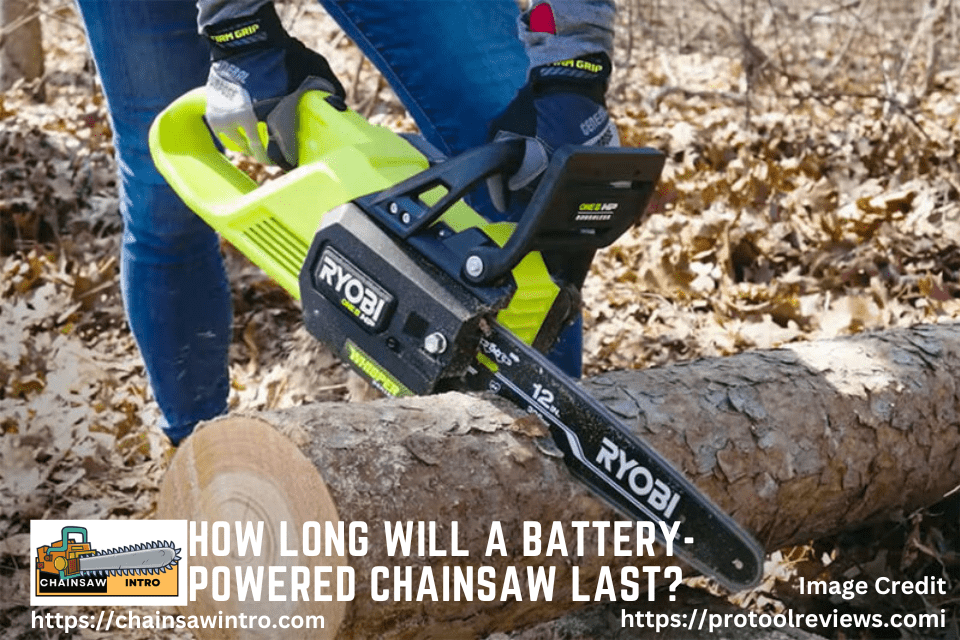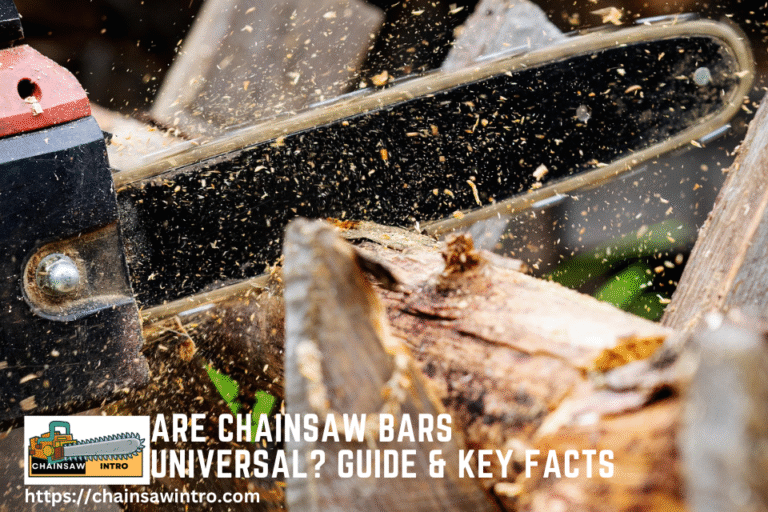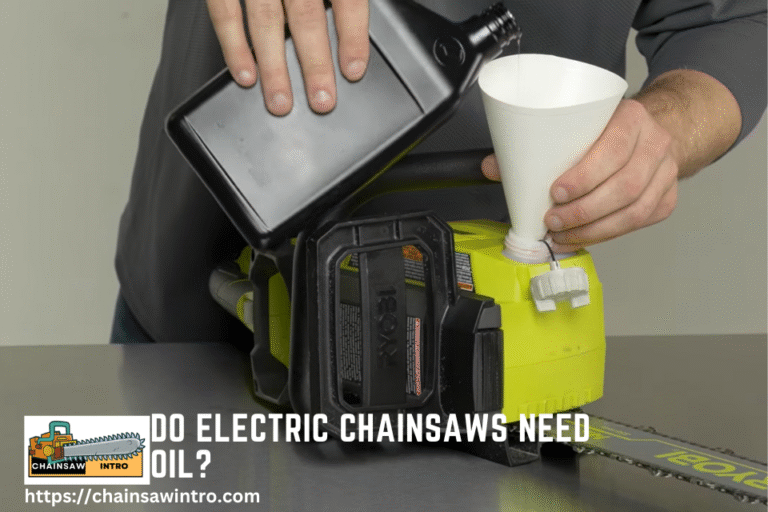Battery-powered chainsaws have become increasingly popular among homeowners, DIYers, and even professionals who need a convenient and eco-friendly cutting tool. They are quieter, lighter, and easier to maintain than gas models. However, one of the most common questions buyers ask is: How long will a battery-powered chainsaw last?
The answer isn’t as simple as giving a single number. It depends on two factors: how long the battery lasts per charge and the overall lifespan of the chainsaw and its batteries. In this article, we’ll break down both aspects so you can make an informed decision before investing in a cordless chainsaw.
How Long Does a Battery-Powered Chainsaw Run Per Charge?
The runtime per charge varies depending on the battery voltage, capacity, and workload. On average:
- 18V or 20V batteries – Typically last 20 to 30 minutes of continuous cutting. Best for pruning, trimming, and small jobs.
- 40V batteries – Offer 30 to 60 minutes of runtime, suitable for cutting firewood and small to medium logs.
- 60V and higher – Can last up to 1.5–2 hours, making them ideal for heavy-duty tasks and cutting larger trees.
It’s important to note that runtime depends on what you’re cutting. For example:
- Pruning small branches uses less power, extending battery life.
- Cutting dense hardwood logs drains the battery faster.
Most homeowners find that a single battery charge is enough for typical yard work, though having an extra battery on hand ensures uninterrupted cutting.
How Long Does a Battery-Powered Chainsaw Last Over Time?
Apart from runtime, another key factor is the lifespan of the chainsaw and its batteries.
- Batteries – A quality lithium-ion battery generally lasts 3 to 5 years or about 300 to 500 charge cycles, depending on usage and care.
- Chainsaw body – With proper maintenance, a battery-powered chainsaw can last 8 to 10 years for light to moderate use.
The limiting factor is often the battery, not the chainsaw itself. Fortunately, most brands like Ryobi, Greenworks, DeWalt, and Makita sell replacement batteries, so you don’t need to replace the entire saw when the battery wears out.
Factors That Affect Battery Chainsaw Lifespan
Several factors influence how long your battery chainsaw lasts both per charge and over its lifetime:
1. Battery Size and Voltage
Higher voltage and amp-hour (Ah) ratings mean longer runtime and stronger performance. For example, a 40V 5Ah battery will last longer than a 20V 2Ah battery under the same workload.
2. Type of Wood Being Cut
Softwoods like pine require less energy to cut compared to hardwoods like oak or hickory. Cutting dense hardwoods will reduce battery life and put more strain on the chainsaw motor.
3. Frequency of Use
Occasional use for pruning and yard cleanup means the saw and battery will last longer compared to daily use for heavy cutting.
4. Maintenance Habits
Proper maintenance, such as keeping the chain sharp, bar oiled, and battery stored correctly, greatly impacts how long your chainsaw lasts.
5. Weather and Storage Conditions
Batteries degrade faster if exposed to extreme heat, cold, or moisture. Storing them in a cool, dry place extends their life.
Tips to Extend the Life of a Battery-Powered Chainsaw
If you want your chainsaw to last as long as possible, follow these maintenance and usage tips:
- Keep the chain sharp – A dull chain forces the motor to work harder, draining the battery faster and wearing out components.
- Lubricate properly – Always keep bar and chain oil topped up to reduce friction and overheating.
- Use the right battery size – Match your chainsaw with the recommended voltage and capacity for optimal performance.
- Store batteries properly – Keep them in a cool, dry place and avoid full depletion. Storing them at around 40–60% charge helps extend battery life.
- Avoid overworking the saw – Don’t push it through oversized logs beyond its capacity. Use the right tool for the job.
- Clean after use – Remove sawdust, dirt, and debris from the bar, chain, and vents to prevent overheating.
By practicing these habits, you’ll not only improve performance but also ensure your chainsaw serves you well for years.
Battery Chainsaws vs. Gas Chainsaws: Lifespan Comparison
Some people wonder whether a battery-powered chainsaw lasts as long as a gas chainsaw.
- Gas chainsaws – Often last 10–15 years with heavy use but require more maintenance, including spark plugs, fuel, carburetor cleaning, and air filters.
- Battery chainsaws – Typically last 8–10 years for homeowners, with minimal maintenance. The main cost over time is battery replacement.
For casual users, a battery-powered chainsaw often makes more sense due to ease of use and lower upkeep costs. Professionals, however, may prefer gas models for continuous heavy-duty work.
Conclusion | Making Your Battery Chainsaw Go the Distance
A battery-powered chainsaw typically runs 20 minutes to 2 hours per charge, depending on the battery size and cutting conditions. Over its lifetime, you can expect the chainsaw to last 8–10 years, while the batteries usually last 3–5 years before needing replacement.
If properly maintained, a cordless chainsaw can be a long-term investment for yard work, firewood cutting, and DIY projects. For homeowners seeking convenience, battery-powered chainsaws offer an excellent balance of performance, durability, and ease of use.
Frequently Asked Questions (FAQ)
How long does a battery-powered chainsaw run on one charge?
A battery-powered chainsaw typically runs 20 minutes to 2 hours per charge, depending on the battery voltage, amp-hour rating, and the type of wood being cut.
How many years will a battery-powered chainsaw last?
With proper care, a battery-powered chainsaw can last 8 to 10 years, while the batteries usually last 3 to 5 years before needing replacement.
Do battery chainsaws lose power over time?
Yes. Lithium-ion batteries gradually lose capacity with age and usage cycles. After several years, you may notice shorter runtime, but replacing the battery restores performance.
Are battery chainsaws as durable as gas chainsaws?
Battery chainsaws generally last slightly fewer years than gas saws but require far less maintenance. For light to medium cutting, they can be just as reliable.
How can I extend the life of my battery chainsaw?
Keep the chain sharp, bar lubricated, and battery stored properly. Avoid overworking the saw on oversized logs, and clean it after each use to prevent overheating.
Can I replace the battery instead of buying a new chainsaw?
Yes. Most major brands like Ryobi, DeWalt, Greenworks, and Makita sell replacement batteries, so you don’t have to replace the entire chainsaw when the battery wears out.
Is a Battery-Powered Chainsaw Worth It?
If you’re looking for a powerful, yet lightweight chainsaw, then a battery-powered model may be worth considering. Battery-powered chainsaws are typically quieter than gas models and don’t produce any emissions, making them more environmentally friendly. They’re also easy to start and require little maintenance.
However, battery-powered chainsaws can be more expensive than gas models, and the batteries need to be regularly charged, which can take some time.
Are Cordless Chainsaws As Good As Gas?
Cordless chainsaws have come a long way in recent years and are now more powerful than ever. However, they still can’t match the power of a gas chainsaw. If you need to cut through thick tree trunks or large branches, a gas chainsaw is the way to go.
Cordless models are more convenient and easier to use, but they’re not as powerful as their gas-powered counterparts.
William C. Bozeman is a seasoned chainsaw expert and outdoor power tool enthusiast with over a decade of hands-on experience in tree cutting, forestry, and property maintenance. Having worked with leading chainsaw brands like Stihl, Husqvarna, and Oregon, Bozeman shares practical knowledge, safety tips, and honest reviews to help homeowners, DIYers, and professionals make informed decisions.












